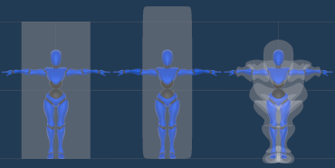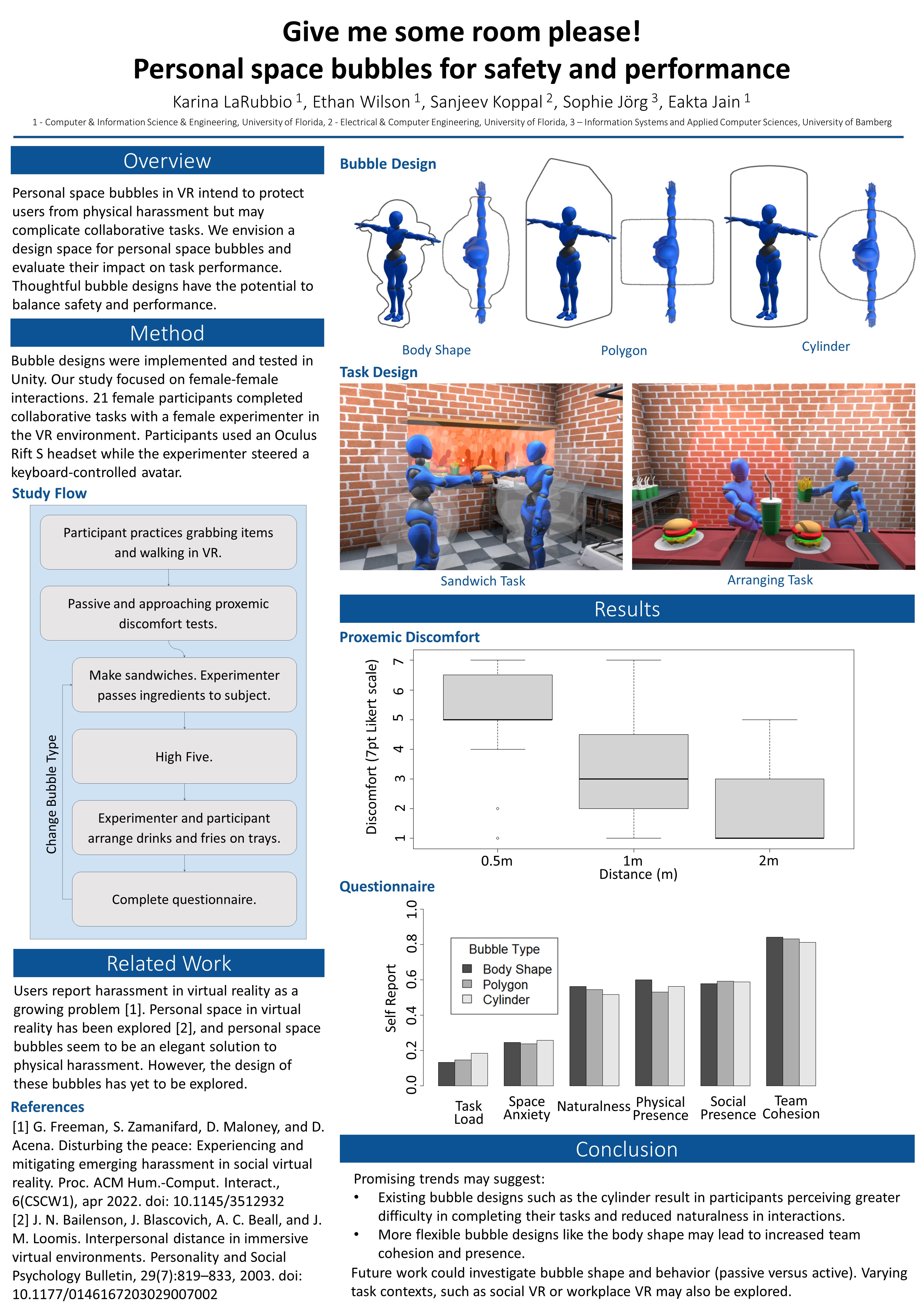Mitigating Harassment in Virtual Reality
exploring harassment prevention techniques that preserve natural user interactions
Personal space bubbles are implemented in virtual environments to protect users from physical harassment. When activated, an impermeable boundary encloses the user completely and complicates collaborative tasks, such as passing objects or performing social gestures. When personal space protection is not balanced with functionality, the personal space bubble becomes a gilded cage. In this project, we raise the possibility of alternate designs for personal space bubbles and test their impact on task performance within a workplace training context. Our early findings suggest that alternate bubble designs have the potential to balance safety and performance metrics such as task completion.

My role in this project was to lead our team from ideation to a user study to a publication. During an initial discussion on Meta’s implementation of compulsory personal space boundaries, I began questioning how that regulation intended to protect vulnerable users may inadvertently bar them from fully enjoying collaboration in virtual environments. My major roles were in ideation, study design, running participants, and quantitative data analysis, and producing a poster and extended abstract.
For more information about this project, please see our teaser video, poster, and IEEE page.

K. LaRubbio, E. Wilson, S. Koppal, S. Jörg and E. Jain, “Give me some room please! Personal space bubbles for safety and performance,” 2023 IEEE Conference on Virtual Reality and 3D User Interfaces Abstracts and Workshops (VRW), Shanghai, China, 2023, pp. 897-898, doi: 10.1109/VRW58643.2023.00291.